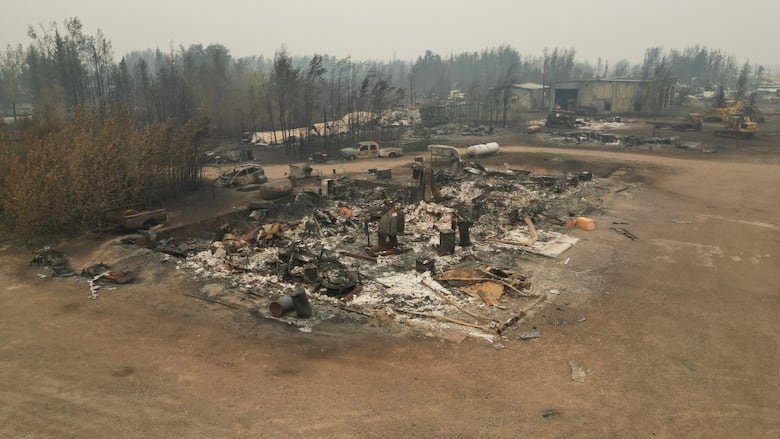Ottawa funding for disaster assistance 'good news', says N.W.T. gov't
Funding now encourages more strategic investments that can prevent disasters, says minister

The N.W.T. government is optimistic about a revised funding program that aims to help provinces and territories rebuild after a disaster.
Canada's emergency preparedness Minister Harjit Sajjan announced last week that changes to the Disaster Financial Assistance Arrangement (DFAA) are intended to modernize disaster relief funding from Ottawa in response to climate change.
"Just look down south of what took place near Los Angeles, where the cost of the damage is $250 billion. So it's staggering, and why this resilience work and modernization of the DFAA is so important," Sajjan said.
Sajjan says a key change is encouraging more strategic investments that can prevent disasters. For example, if a community wants to rebuild a bridge differently after a flood so it won't get washed out again, it can now get funding for that.
"We couldn't fund it before, but now we can," Sajjan said, adding that Ottawa will cover 100 per cent of eligible mitigation costs in high-risk areas of the territories.

Since the DFAA program's inception in the 1970s, Sajjan says it has paid out more than $9 billion. But he says it needed to be modernized based on today's needs. A news release says the program was reviewed in "close collaboration with provinces and territories and was guided by significant inputs from Canadian and international experts."
Recent climate-related disasters in the Northwest Territories have left the territorial government with significant bills to pay — from unprecedented flooding in Hay River to a devastating fire season that destroyed much of Enterprise in 2023 — each of which resulted in $175 million in damages.
"We are pleased there's some good news," said Jay Boast, a spokesperson for the N.W.T. Department of Municipal and Community Affairs.
Boast says this new incentive will provide more flexibility in budgeting for rebuilding, helping the territory construct better infrastructure to reduce the impact of future disasters.
"Being confident that there are additional funds for mitigation, and that the territorial government won't have to bear the full cost… that's a big deal," Boast said.

He says that whatever the solution — whether new materials or technology to rebuild a structure — the key difference now is that funding is available to implement these measures and prepare for the next season.
More strings attached to funding
The new model breaks funding into five streams, including one for more vulnerable people, those hit hardest by natural disasters, seniors, people with lower mobility and low incomes.
"So there are some provisions there ... the federal government is trying to ensure that the assistance goes to the people who need it most," said Jason Thistlethwaite, an associate professor at the University of Waterloo.
He researches ways to reduce the economic impact of natural disasters and climate change. Thistlethwaite says the territories will now be expected to focus more on preparing for the next disaster.
While the territories can expect more funding, he says the reforms are designed to increase accountability in how disaster relief money is spent.
"What the federal government doesn't want to do anymore is just give this money back to provinces and territories without some accountability to try and rebuild in a way that helps manage risk," he said.

Another improvement, he says, is speeding up the flow of funds to the territories.
"Oftentimes, provinces don't get funding back for three, four, sometimes five years after the event," Thistlethwaite said.
He says there are benefits in these changes. But he says success will depend on how the provinces and territories implement them, something that may come with challenges.
"There's going to be concerns and pushback among them that they may be seeing less funding because… there's more strings attached to the funding," Thistlethwaite said.
But how effective will these changes be? Thistlethwaite says that will only become clear after the next natural disaster.
The revised program is expected to take effect on April 1.

